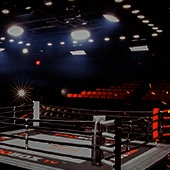Deontay Wilder and Tyson Fury are contradictions personified. They defy conventional boxing wisdom in that respective style do not typically mesh with their body types. In fact, it would actually make more sense if each had the other's skill set.
A stringbean of a heavyweight, Wilder doesn’t have an ounce of fat on him. His lean physique suggests speed, agility, versatility and long, whipper-snapper jab to keep opponents at bay. But Wilder is in actuality quite one-dimensional in his mode of combat.
He pokes and prods with his jab more than he snaps it out, allowing virtually every opponent who lasted more than a round or two to effortlessly close the distance and clobber him up in the pocket. Nimble footed he is not; Wilder is great at using his legs to pivot and generate power to his punches but is woefully deficient when it comes to lateral movement or chasing down opponents.
Wilder gets away with all those flaws because what he does well, he does incredibly well - punch. Except for Fury, he has stopped all 39 of his previous opponents.
At first glance, Fury appears to be a top-heavy giant of a heavyweight who simply overpowers opponents with his sheer size. His body is anything but chiseled and a guy that big must surely be slow and easy to hit. Here again, the physique doesn’t match the style.
As big and flab-laden as he is, Fury is an infuriatingly elusive target. Surprisingly agile, he dips, ducks, twists and turns away from incoming blows with surprising ease. He reads body language so well that it often seems like he knows his opponents' next move is before they do. He punches in combinations and from different angles and even occasionally does it from a southpaw stance.
Fury’s immense size comes with the expectation that he packs crushing power in his punches but that is not the case. He is partial to throwing arm punches and rarely sits down on his shots. His knockouts are typically the result of sustained punishment rather than a single debilitating power shot.
Wilder’s and Fury’s contradictions collided and colluded to produce a wonderfully intriguing and entertaining candidate for Fight of the Year for 2018.
Both insist they deserved the victory in their first encounter and a legitimate case can be made for both claims. At this juncture of their careers, though, both fighters are set in their ways so don’t expect any major changes in style or strategy. Instead, expect Wilder and Fury to improve on what they did right and minimize on what they did wrong in the first fight.
What Wilder did right
It would be easier to talk about what Wilder did wrong in the first bout since he was outboxed and outfoxed for most of the fight, But what he did right was refuse to be discouraged or intimidated by Fury’s slickness and savvy. He never wavered, kept Fury in the crosshairs throughout and it paid off the the ninth and 12th rounds when he sent Fury to the canvass.
Offense was Wilder’s best defense in the first fight. He showed that the best way to stop Fury from mounting a sustained attack is to punch back with a vengeance. The trouble is, he didn’t do it often enough and allowed Fury to dictate the action for prolonged stretches of the fight.
What Fury did right
Except for getting dropped twice, Fury fought a near perfect fight. He utilized the whole ring and his slick upper body movement had Wilder catching air all night. When he did get caught and dropped, Fury displayed the heart and chin to get back on his feet and quickly reestablish control of the fight.
Offensively, Fury executed a circle-and-ambush strategy to a tee, again with the exception of hitting the deck twice. He struck at opportune moments as Wilder pursued him around the ring and stepped out before Wilder could return fire. But it became clear that as easily as it was for Fury to hit Wilder, he did not have enough pop in his punch to hurt him.
How will the rematch unfold
Both Fury and Wilder tipped the scales substantially heavier than their first fight. How will the extra weight affect them? Will the horrific cut Fury suffered less than six months ago reopen? Should Wilder pursue and pressure with greater urgency will he be able to cut off the ring with greater regularity and force Fury to trade, or will he just run himself into more counter punches? Without the firepower to knock Wilder out, can Fury avoid a fight-ending punch for the entire 12 rounds?
See prediction for Wilder-Fury II at: https://peterliminator.blogspot.com/2020/02/deontay-wilder-vs-tyson-fury-ii.html



